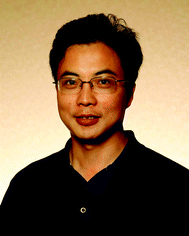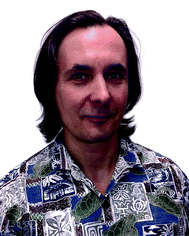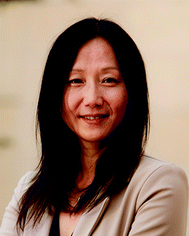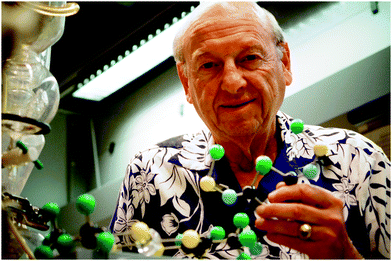Fred Wudl's fifty-year contribution to organic semiconductors
Qichun
Zhang
 ab,
Dmitrii F.
Perepichka
ab,
Dmitrii F.
Perepichka
 c and
Zhenan
Bao
c and
Zhenan
Bao
 de
de
aSchool of Materials Science and Engineering, Nanyang Technological University, 50 Nanyang Avenue, Singapore 639798, Singapore. E-mail: qczhang@ntu.edu.sg
bDivision of Chemistry and Biological Chemistry, School of Physical and Mathematical Sciences, Nanyang Technological University, Singapore 637371, Singapore
cDepartment of Chemistry, McGill University, 801 Sherbrooke Street W., Montreal H3A 0B8, Canada. E-mail: dmitrii.perepichka@mcgill.ca
dSUNCAT Center for Interface Science and Catalysis, Department of Chemical Engineering, Stanford University, Stanford, CA 94305, USA. E-mail: zbao@stanford.edu
eSUNCAT Center for Interface Science and Catalysis, SLAC National Accelerator Laboratory, 2575 Sand Hill Road, Menlo Park, CA 94025, USA
 Qichun Zhang |
 Dmitrii F. Perepichka |
 Zhenan Bao |
This special issue of the Journal of Materials Chemistry C is a tribute to the fifty-year research career of Professor Fred Wudl, one of the pioneers of organic conducting materials. The footprint left by Prof. Wudl in organic electronics will continue to shape this discipline for many years. His creativity in designing new molecules enabled a number of major milestone developments in the field, such as: organic metals and superconductors,1,2 organic ferromagnets,3 soluble conjugated polymers4,5 and conjugated polyelectrolytes,6 low band-gap polymers,7 and bulk heterojunction solar cells.8 As one of the most cited chemists, Prof. Wudl has paid uncharacteristically little attention to the recognition of his work. Yet it has led to truly international respect and many awards. To name a few distinctions, Fred Wudl was a recipient of the Seaborg Medal from the University of California, Los Angeles; the Wheland Medal from the University of Chicago; the Spiers Medal and the Stephanie L. Kwolek Award from the Royal Society of Chemistry; the Arthur C. Cope Scholar Award, the Chemistry of Materials Award and the Tolman Medal from the American Chemical Society; and DSc honorary degrees from the University of Trieste (Italy) and Complutense University of Madrid (Spain).
Throughout half a century, Fred has been a role model for several generations of materials chemists, inspiring his students, collaborators and competitors with his unique creativity and perpetual scientific curiosity, which contagiously glows from his eyes in Fig. 1. Not for the first time,9,10 these inspired scientists come together to commemorate Wudl's contribution to materials chemistry. In this special issue, you will find 32 articles, including reviews, a highlight article, communications and full papers. While mostly focused on organic semiconductors, they are as diverse as Fred's own work. The breadth of the topics spans the synthesis of new conjugated molecules and polymers, various aspects of their structure–properties relationships, and their applications in organic light-emitting diodes (OLEDs), organic field-effect transistors (OFETs), solar cells, photodiodes, sensors, magnetic and non-linear optical materials.
Many of these articles directly continue the legacy of Fred's contribution to materials chemistry. The report by Fu et al. (DOI: 10.1039/C7TC05757A) on supramolecular control in tetrathiafulvalene (TTF) derivatives was, of course, enabled by Fred's discovery of this fascinating molecule.11 In the 1970's and 1980's, charge-transfer complexes of TTF and related π-electron donors and acceptors led to a plethora of organic metals and superconductors.2 Now, they find new applications, such as in OFETs, as shown in the review by Zhang et al. (DOI: 10.1039/C7TC04389A).
A big chapter of Fred's research life was associated with pioneering and developing the chemistry of C60 fullerene;12,13 his famous fullerene derivative PCBM revolutionized the field of organic photovoltaics.8 In this issue, Bredas and co-workers provide a computational insight on how the mechanical and electronic properties of PCBM can be improved by mixing PC61BM with a limited amount of (more expensive) PC71BM (DOI: 10.1039/C7TC03820H). A review from Meng's group further elaborates this topic by giving an up-to-date summary of field-effect transistor performances of various fullerene derivatives (DOI: 10.1039/C7TC05079H).
Several papers in this issue reveal a hereditary relation with Fred's work on conjugated polymers. Schanze's work on conjugated polyelectrolyte sensors (DOI: 10.1039/C7TC05081J) benefited from Wudl's discovery of this class of materials in the 1980’s. Branched alkyl chains, first introduced by Wudl in his famous MEH-PPV,5 have now become a general synthetic tool in controlling the morphology and electrical characteristics of conjugated polymers, as highlighted by McDearmon et al. (DOI: 10.1039/C7TC05052F). The recent interest in azaacenes, presented in this issue in the papers by Miao's (DOI: 10.1039/C7TC04092J), Grimsdale's (DOI: 10.1039/C7TC05057G) and Zhang's (DOI: 10.1039/C8TC00628H) groups, builds on Fred's work in the 1990’s on the effects of nitrogen substitution in oligoacenes.14
In compiling this issue, we have received a hugely enthusiastic response from the community of researchers whose work was influenced, one way or the other, by Professor Fred Wudl. This is the best evidence for his pioneering role in the field of organic electronics. Although Fred has closed his research lab at UCSB last year, he is still very much involved in contributing new ideas through collaborations. We are delighted to include a report on remarkable broad band (350–2500 nm) photodetectors using low band-gap polymers co-authored by Fred Wudl, Xiong Gong and co-workers (DOI: 10.1039/C8TC00437D). We hope you will enjoy reading through these contributions and reflect with us on the remarkable role of thought leaders, like Fred, on the shape of the current science.
References
- F. Wudl, D. Wobschal and E. J. Hufnagel, J. Am. Chem. Soc., 1972, 94, 670 CrossRef CAS.
- F. Wudl, Acc. Chem. Res., 1984, 17, 227 CrossRef CAS.
- P. M. Allemand, K. C. Khemani, A. Koch, F. Wudl, K. Holczer, S. Donovan, G. Gruner and J. D. Thompson, Science, 1991, 253, 301 CAS.
- S. Hotta, D. D. V. Rughooputh, A. J. Heeger and F. Wudl, Macromolecules, 1987, 20, 212 CrossRef CAS.
- F. Wudl and G. Srdanov, US Pat., 5189136, 1993 Search PubMed.
- A. O. Patil, Y. Ikenoue, F. Wudl and A. J. Heeger, J. Am. Chem. Soc., 1987, 109, 1858 CrossRef CAS.
- F. Wudl, M. Kobayashi and A. J. Heeger, J. Org. Chem., 1984, 49, 3382 CrossRef CAS.
- G. Yu, J. Gao, J. C. Hummelen, F. Wudl and A. J. Heeger, Science, 1995, 270, 1789 CAS.
- M. Bendikov, N. Martin, D. F. Perepichka and M. Prato, J. Mater. Chem., 2011, 21, 1292 RSC.
- A. L. Briseno, J. J. Mallett and K. S. Schanze, ACS Appl. Mater. Interfaces, 2015, 7, 27987 CAS.
- F. Wudl, G. M. Smith and E. J. Hufnagel, J. Chem. Soc. D, 1970, 1453 RSC.
- T. Suzuki, Q. Li, K. C. Khemani, F. Wudl and O. Almarsson, Science, 1991, 254, 1186 CAS.
- J. C. Hummelen, B. Knight, J. Pavlovich, R. Gonzalez and F. Wudl, Science, 1995, 269, 1554 CAS.
- (a) F. Wudl, P. A. Koutentis, A. Weitz, B. Ma, T. Strassner, K. N. Houk and S. I. Khan, Pure Appl. Chem., 1999, 71, 295 CrossRef.
| This journal is © The Royal Society of Chemistry 2018 |

